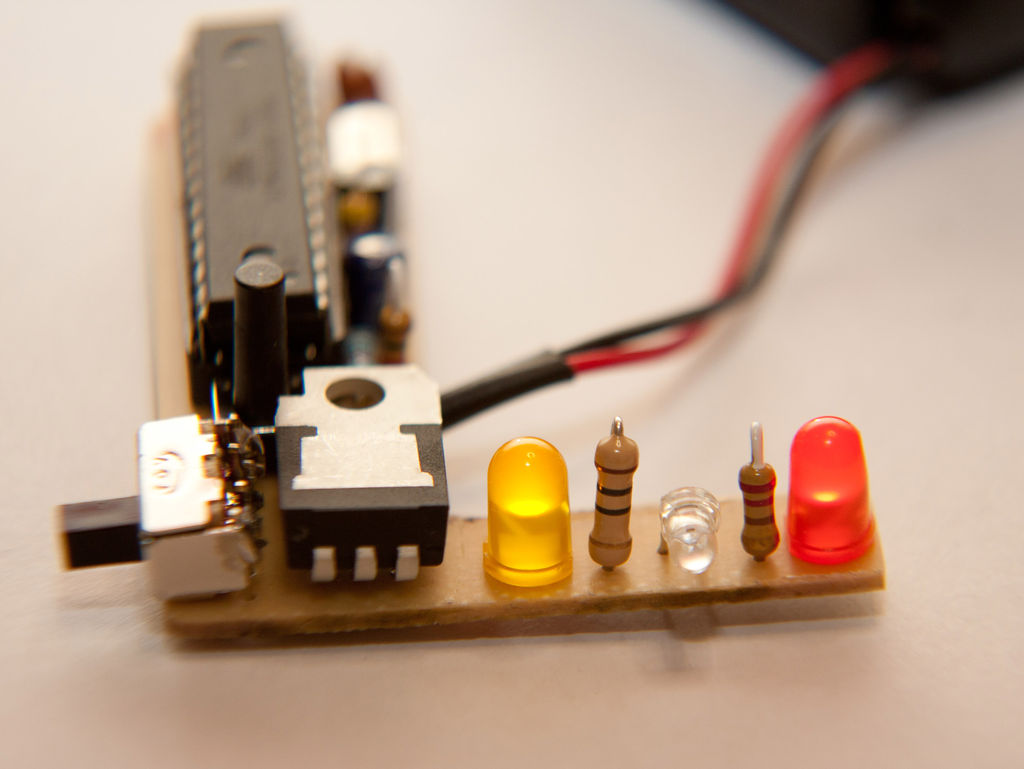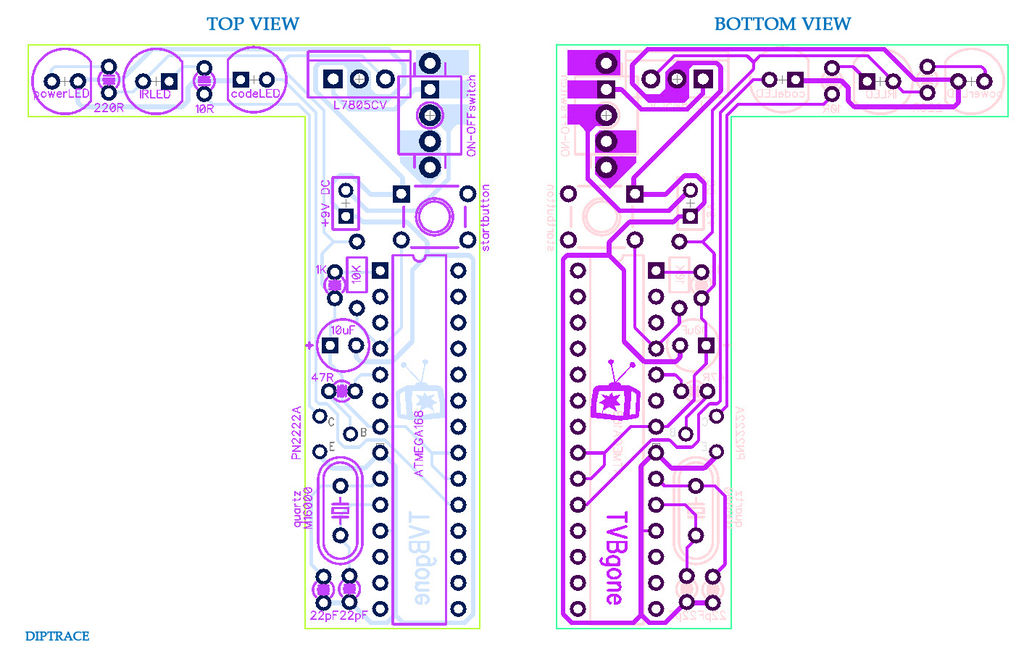Yes, I know what you are thinking: “oh no, please not another TVBGone…”
Anyway, this instructable is for the newbies as me which are still experimenting with Arduino, and prefer to program an Atmega168 in Arduino than an AtTyny85 with other methods.
This circuit is based on Mitch Altman’s TVBGone and on Ken Shirriff’s blog where the software has been modified to match Arduino IC. I then decided to move the programmed Atmega on a dedicated pcb, and make everything fit in a transparent box with a 9V rechargeable battery.
Step 1: choose the box
My TVBGone uses only a little IR LED, so it shouldn’t be much powerful, anyway it’s enough to turn off the unwanted tv with ads which had born as mushrooms anywhere in any station here in Milan, the difference is that mushrooms are very quiet…
Step 2: the BOM
In pdf you will find the traces to transfer on the copper board and the top view with components position and values. Next is the bill of materials.
- an ATmega168 with socket
- a temporary NO button
- a little switch
- a 5V voltage regulator L7825CV
- a 16000 hz quartz
- an NPN transistor PN2222A
- two coloured LEDs
- an IR led
- the following resistors: 220ohm, 10ohm, 1Kohm, 10Kohm, 47ohm
- the following caps: 10uF, 22pF, 22pF
- a 9V battery with connections
- a convenient box
- a damned annoying television always turned on
Step 3: the pcb printing…
As usually, after cutted the copper board at the (almost) right dimension, I’ve laser-printed the traces on a glossy paper and I transfered them on the board with an iron. For this process you could follow this instructable “the TIRR (very simple Timelapse IR Remote)” or this other one “BBB (Bothersome Blinker for Bikes)” where it’s good explained.
When you’ve transfered the scheme on the copper and cleaned it from the paper, check meticulously the continuity of the single traces, and try to fill with a fine permanent marker every interruption. After that you’re ready to etch your pcb.




